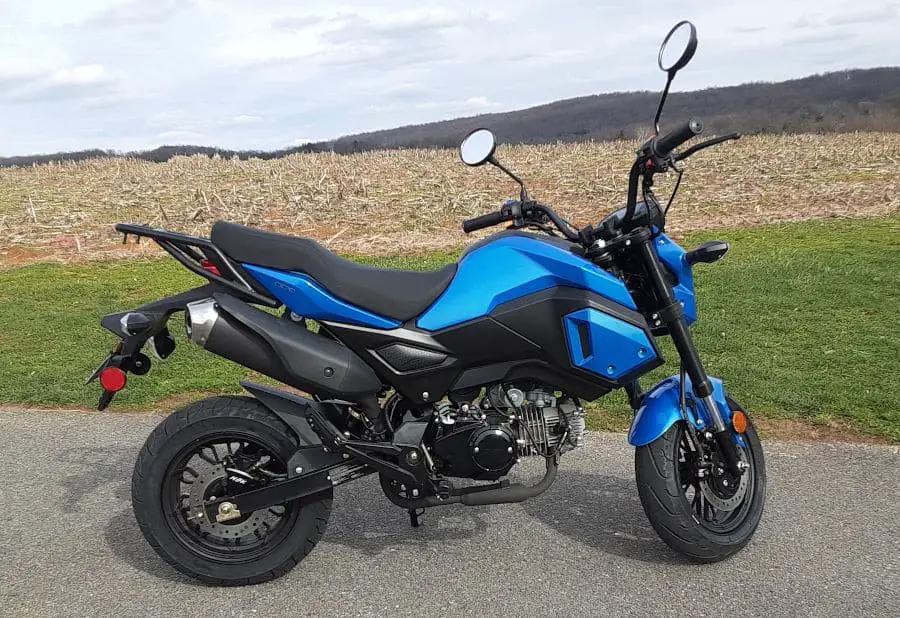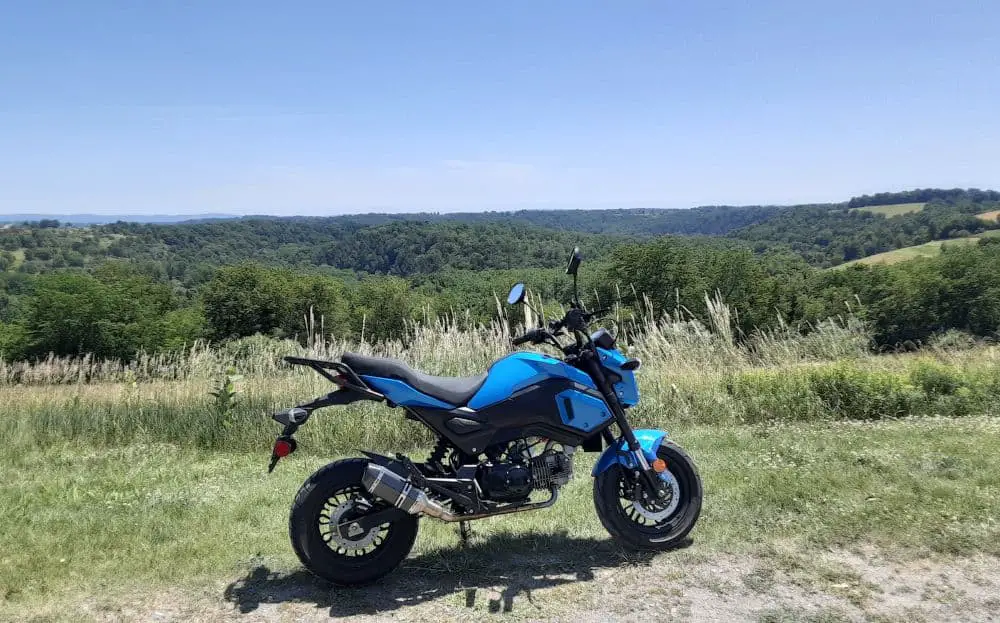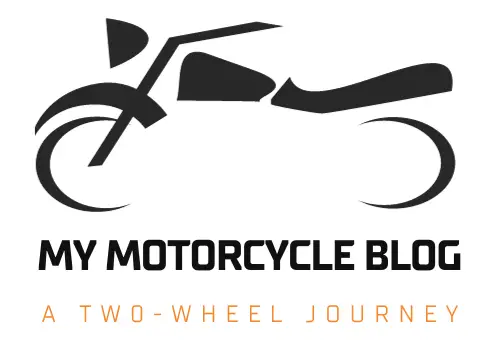I’ve been having issues with my new Boom Vader motorcycle, a Grom Clone, and found references to the source being a motorcycle engine vapor lock. I felt much of the information posted was incorrect and thought I would do a quick post not about how motorcycle engine vapor lock isn’t affecting my Boom Vader, but what vapor lock is and how it affects the engine.

My Background, With Carburetor-ed Engines.
I am a late bloomer in the carburetor age of car engines, but my first car had a carburetor, a 1984 Toyota Corolla. It has problems, but I bought it for $1800, in cash, from another sailor when I was in the US Navy.
This Toyota Corolla had issues. I knew the guy selling it liked buying cheap cars, fixing them up, and then flipping them to other sailors. Being in the military, we were both poor and often naive. Well, this car was in ‘good’ working order, but the seller spent more time bonding it than actually repairing/tuning it up.
It seems he tightened every bolt, cleaned the engine compartment of oil leaks and dirt, and got it ready for reselling. It ran, it was a great first car(for driving and working on), and I had lots of memories in that car spending time with my Wife on road trips and visiting sites. Miss that car.
OK, one problem I had to deal with living down south at the time was very high temps, which led to starting problems, and I found it was that my engine was vapor locking. Or, more importantly, my carburetor fuel lines were vapor locking.
So What Is Engine Vapor Locking?
A quick Wikipedia Search generates this rather generic response, but this is what we love about Wikipedia. It just scratches the surface, and then we can take steps to dive deeper.
Vapor lock is a problem caused by liquid fuel changing state to gas while still in the fuel delivery system of gasoline-fueled internal combustion engines. This disrupts the fuel pump’s operation, causing feed pressure loss to the carburetor or fuel injection system, resulting in transient loss of power or complete stalling. Restarting the engine from this state may be difficult.
Wikipedia: https://en.wikipedia.org/wiki/Vapor_lock
Well, what does this mean for our motorcycle engine or any engine? Gasoline is a liquid, and as I learned in fire fighting school, it really doesn’t burn well compared to how gasoline is supposed to burn as a gas vapor.
So gasoline contains energy that is extracted best when it’s vaporized, and gasoline vaporizes quickly with high volatility and higher vapor pressure. This is good, so the gasoline can move towards the engine as a concentrated liquid and then easily vaporized when needed to prepare for energy extraction.
Well, as long as gasoline is vapor where it’s supposed to be and a liquid where it’s supposed to be, conditions in the engine are better set up to operate as designed.
This is where the vapor lock interferes with the operation of the engine. When a section in the file system expects nice, concentrated gasoline in its liquid phase but only has the gas phase as gasoline vapor, we get a vapor lock.
In the motorcycle engine, it’s easy to figure out where the gasoline is supposed to be in the liquid phase:
- The motorcycle gas tank.
- The fuel lines.
- The fuel pump.
- Up to where the gasoline is introduced into the engine’s air intake.
We get problems everywhere the gasoline starts to change from a liquid state to a gaseous state.
We know this isn’t good if your motorcycle gas engine is only filled with vapors. Recall the cliche “running on fumes?” This is not a good condition and expresses a sense of dread.
The energy concentration is rapidly diminished if your fuel lines contain gasoline as a vapor and not as a liquid. If there is a fuel pump, that pump is designed to pump liquids, not gases, so it will fail to function. Just a summary, the engine will be robbed of the fuel it needs to operate, and it will be vapor locked.
Now that we beat this dead horse down to the point there is no more a horse; we have an understanding that vapor lock is where there is vapor in the fuel system where there shouldn’t be vapor. 😀
What Happens When A Motorcycle Vapor Locks?
Vapor lock occurs when the liquid gasoline flashes into a vapor, blocking the flow of liquid gasoline in the fuel system. This gas vapor will bind fuel pumps or fuel lines and create back pressure on the fuel lines preventing liquid fuel from flowing to the engine.
What Are Symptoms Of Motorcycle Engine Vapor Locking?
I know the engine has a vapor lock by:
1.- Low fuel flow/pressure.
2.- Loss of engine power for your motorcycle.
3.- Actual engine stalling in your motorcycle.
4.- Difficulty starting/restarting your motorcycle engine.
Does any of this sound familiar with your Boom Vader motorcycle or any Grom Clone motorcycle? If so, leave a comment below. I want to compare notes.
How To Prevent Motorcycle Engine Vapor Locking?
Well, a straightforward way to stop vapor lock is to keep the gasoline in a liquid form till it’s needed to be intentionally changed to a gas/vapor in the engine. So to fix vapor lock, you prevent vapor lock.
But what steps can we take to reduce the chance of vapor lock, and what are some contributing factors towards vapor lock?
Motorcycle Vapor Lock Factors:
1.- Increased Fuel Pressure.
With increased pressure applied to gasoline, like many liquids, its ability to flash into a vapor is reduced. So pressuring the system with help reduce the chances the gasoline will flash into a vapor.
2.- Reduce Gasoline Temperatures.
For gasoline to change phase from liquid to a gas, there needs to be energy input into the gasoline. By reducing that energy, in this case, heat, we can keep gasoline as a liquid in the fuel system.
So what temp does fuel vapor lock? As low as 120F-140F, and you can imagine that the motorcycle engine can reach these temps pretty quick.
3.- Increased Fuel Flow.
When gasoline starts changing to a vapor, it starts small. Like boiling a pot of water, you get tiny bubbles that form before you get larger bubbles. If fuel flow is high, these bubbles are broken up and prevented from accumulating and blocking fuel lines and pathways.
4.- Formulated Gasoline.
Gasoline has a low vapor temp and high vapor pressure, and if you add a stabilizing additive, the temperature needed to vaporize the gasoline increases. This means the likelihood for this gasoline to vaporize decreases.
On the counter side, I’ve read enough times that ethanol-gasoline formulas lower the vapor temp, which can lead to vapor lock conditions earlier in motor engines. 🙁
How Do We Use This Information To Prevent Vapor Lock In Our Motorcycles?
1.- Increasing the fuel line pressure.
Use a fuel injection system on motorcycles. The fuel line will be pressurized from the source, a fuel pump in the motorcycle gas tank, and the chances of the gasoline vaporizing in the fuel line are reduced.
2.- Reduce The Gasoline Temperatures.
Prevent fuel lines from running too close to the engine’s hot parts(exhaust piping, engine air fins, etc.).
Use a heat shield, or blocking material, to prevent heat transfer to the fuel lines.
Optimized cooling. If you have a fan on your motorcycle, ensure airflow moves heat away from the engine and the fuel lines.
3.- Increased Fuel Flow.
The only thing I figure we can do with this is to ride the motorcycle and keep the engine under load. And understand under low flow conditions, like long stops, is when the gasoline will most likely flash into a vapor.
So we can use this information to maximize the cooling process or reduce the heat generation process. Either with lane splitting( not legal everywhere) or stopping the engine.
I wish I could figure out a better solution. Still, I didn’t recall any motorcycle engines that had recirc lines back to the fuel tank like some cars to keep the gasoline in circulation during low-demand periods. :/
4.- Buy Only Good Gasoline.
I am a fan of this; I never liked how ethanol-gasoline lowers MPG and can trap moisture and lead to rush in some fuel systems, but how do I avoid it.
Like many people, fuel selection and prices are hard to get around. Because ethanol is so taxpayer-supported and technically prepaid, it’s added to the current gasoline(already high priced), dilutes the gas, and reduces the overall cost at the pump.
Ethanol gasoline increases our taxes, reduces our miles-per-gallon results, and can lead to premature mechanical failures in our engines.
So….. I want real gas for my motorcycle. What I want and get are two different things, and if you have access to quality gasoline-gasoline, this might be an excellent option to prevent vapor lock in your motorcycle engine. Also, get a better experience from riding your bike. 😀
This part about ethanol-gasoline took a weird direction based on my opinions and experience, but get only fuel up with gasoline for your motorcycle.
How To Fix Your Motorcycle Vapor Locking Problems?
My Shortlist:
- Fuel injection helps.
- Protecting fuel lines helps.
- Cooling parts that can overheat helps.
- Good gas helps.
Fixing An Already Vapor Locked Motorcycle Engine?
As long as there is a condition causing the vapor lock, like overheating, it will continue, so the first step is to stop the cause. This case lets the engine cool down. Afterward, wide open the throttle and crank the engine. This process should draw fresh fuel in and purge the vapor out. Once started, adjust your throttle to smooth out the engine operation.
Recap: What Is Motorcycle Engine Vapor Lock?
Trapping of gasoline vapor in sections of the motorcycle fuel system where liquid gasoline is displaced and flow to the engine is interfered with—usually affected by motorcycle fuel system design, fuel mixture, and, more importantly, environmental operating temperatures.
Recap: How Do I Stop My Motorcycle Engine From Vapor Locking?
Buy fuel-injected motorcycles, use a thermal barrier between fuel lines and hot engine components, maximize cooling of sensitive fuel lines(airflow, distance from engine, etc.), minimize heat generation versus cooling supply, and buy good gasoline.
This is my plan for now and the future, even though I have only carburetor engines. :/
Do I Think My Boom Vader Motorcycle Is Vapor Locking?
NO.

The symptoms I’m losing power issues after periods of riding. Because of this, it might appear like a vapor lock since the little engine is fully warmed up and running a little hot, but no. I do not feel like I’m running into vapor lock conditions for my Boom Vader motorcycle.
My opinions are based on my experiences riding my Boom Vader and reading posts about other Grom Clone motorcycles bogging and stalling after riding for a while.
Boom Vader Vapor Lock? No, But No Fuel? Yes!
Does Your Grom Clone Motorcycle Vapor Lock?
I hear too often that their motorcycle is vapor locking, which seems to be with carbureted engines like those in Grom Clones. Is your Grom Clone motorcycle vapor-locking? Please comment below on your symptoms and the make/model of the motorcycle so that we can compare notes.
Note: Information here is based on my experiences with my car and helping other car owners with their engine problems. As well as supplemented by many sources over the years. If you have something to add to the information, feel free to comment.
Thank you, Ride Safe, Ride Fun!
Click To See My Recommended
Boom Vader Gen 2 Upgrades

Hi I’m Tom, A New Motorcycle Rider and Blog Author.
I am a new rider(Pa Learners Permit at the end of 2020, and I received a Pa Motorcycle License in 2021 after passing a Motorcycle Safety Course).
I bought my first motorcycle, a TaoTao TBR7, at the beginning of 2021 and have been doing upgrades on that motorcycle since.
I added to my motorcycle collection by buying a Boom Vader Gen 2 in 2022, and that Grom-Clone motorcycle has been upgraded by me as well.
I continue to ride my Boom Vader Gen 2 motorcycle as well as my TaoTao TBR7 dual-sport bike.
Read more on my About Me page.
Fun Fact: I’ve only been on one group ride.

